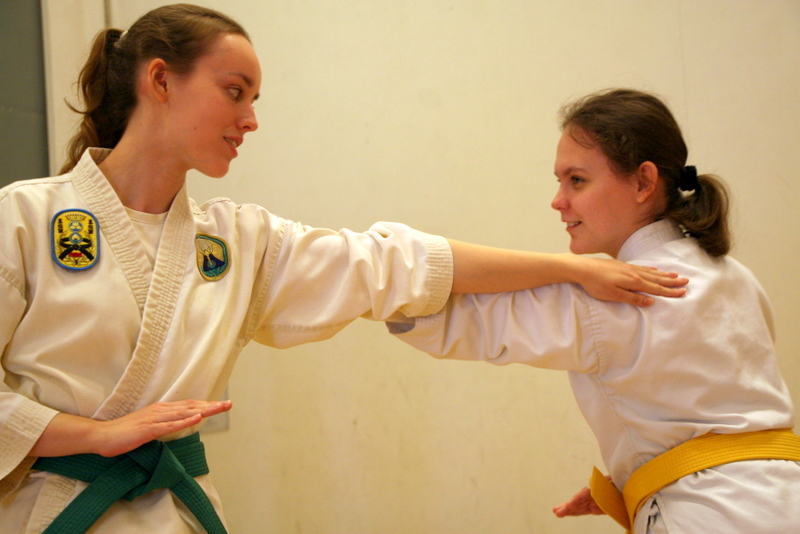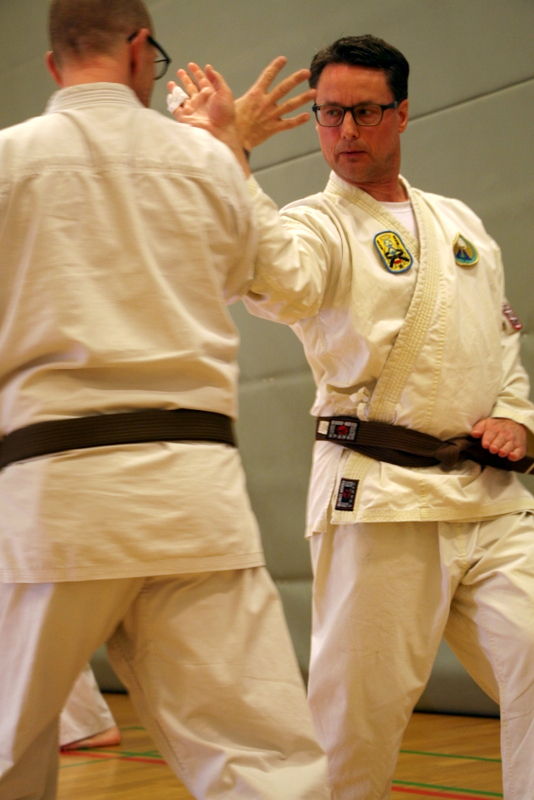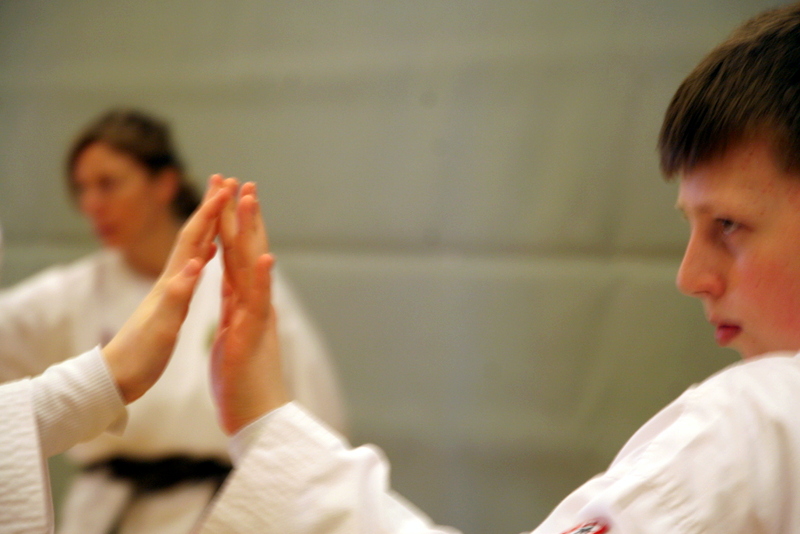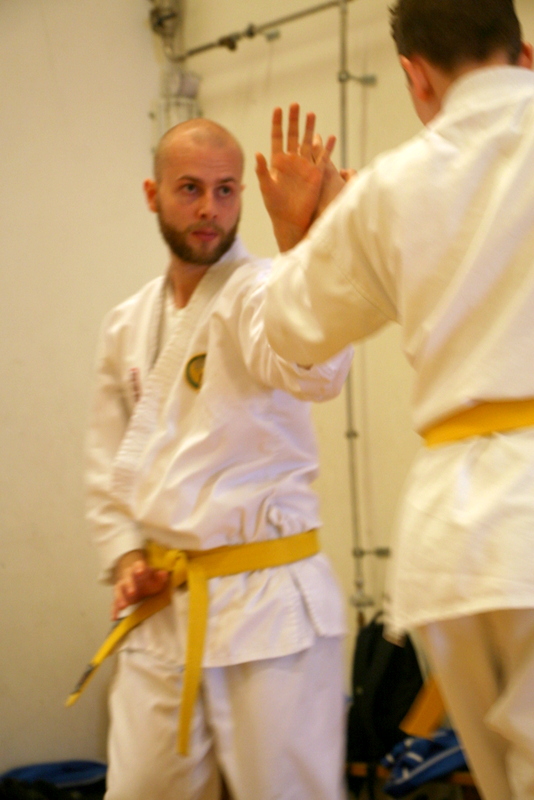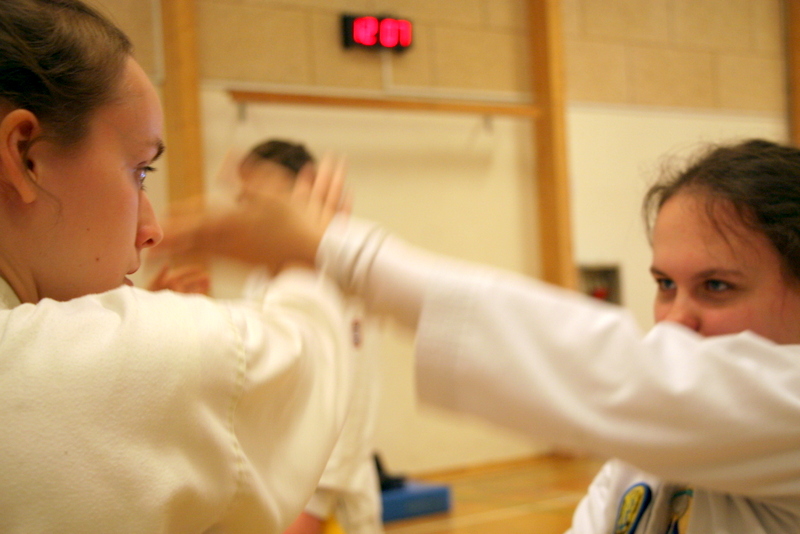How can you understand an essence if you cannot see it? Yes, it is probably impossible or perhaps it often happens that you interpret the essence yourself and thus create your own. Humans are arranged in such a way that if there is something we don't fully understand, we throw it away and don't want to look at it any more or we interpret it ourselves. There are of course also those people who recognize that there must be some who know the essence and who can help on the way to the essence - i.e. they respect and accept others and their abilities.
It is precisely part of the value set at Shindenkan and something that we cherish very much. Why train the same technique 10,000 times without finding the essence when you can train the essence and understand the technique very quickly? The deep dish was invented so why try to change it? It is probably one of the most exciting and destructive qualities we humans possess, namely our ego.
Exciting because as a human being you are completely undecided about it and devastating because you become your own worst enemy and despite this always point to others when something goes wrong. So what does this have to do with Shakua Sei Course Part 2? It is simple to answer because part 2 was about partner exercises and being able to set aside yourself and your own ego in order to get optimal training out of it both for yourself and for your partner.
If you want to change the world, you have to start by changing yourself - i.e. learn to know oneself for good and bad and not believe that the whole world is changing - it is the ego that speaks. When you know yourself, you are clear about yourself and thus take responsibility for yourself. This is incredibly important if you want to learn real martial arts and martial arts, regardless of whether it is Chinese or Japanese. The Shakua Sei course is about the Chinese martial arts and the knowledge that has been delivered so far is completely unmatched.
Even if you have been part of martial arts for many years, you find out that the reality is different than you think. Chinese martial arts is as historic as Japanese, but the way it is served to the outside world is different and maybe that is why the perception of Chinese martial arts is the way it is. Here on the course we got a real insight into Chinese martial arts and how fantastic it is that now we know about both Japanese and Chinese martial arts and we have gained knowledge and skills that not many others have - and this served directly from a completely unique martial art grandmaster .
All the participants were of course extremely excited about what course part no. 2 would contain and how it would continue according to part no. 1. It can be said with certainty that no one was disappointed and absolutely no one left part 2 without being completely filled with knowledge and learning that kick ass.
The essence in part 2 was about "Push Hands" which is the essence of Chinese martial arts. Many of the forms of "Push Hands" that are trained today are from approx. 1949. The "Push Hands" that was taught in the Shakua Sei course part 2 was original and the way it was originally trained. That is we had the real thing served on a golden platter built up step by step.
"Push Hands" is about feeling the energy and balance from the opponent, not to win, but to be able to process everything in the direction you want to bring the opponent in. Even before the course got well underway with the Ryuha part, many of the participants began to could see similarities with already known techniques in both armed and unarmed Yakami Shinsei-ryu Karate-do – Kimu Sensei thought it was absolutely fantastic because it showed that the introduction of OBC had made the participants think multi-tracked thoughts and not just single-tracked – it could not be better.
The entire part 2 of the Shakua Sei course was a massive wave of partner exercises - also called kumite. However, it wasn't kumite where you have to win, but kumite where you have to learn from each other and thus be good to yourself and your partner - yes, kumite has more faces than you think, but that's also the reality if you want to see the
Initially, there was Taisabaki with associated feelings and sensations for the opponent's energy at different distances – from the inside out and from the outside in. The principles from Ju-jutsu 3 and Task Fighting suddenly got links to Chinese martial arts and it all started to come together. It just lifted the mood, because when it all started to take the form of balance breaking step by step, there wasn't a dry eye. This was super exciting and at the same time being able to see the connection to what you already know was fantastic.
Kimu Sensei demonstrated on Jens Hanshi-dai, 6th dan YSK, 7th dan KGK, how you can very easily create imbalance in an opponent and thus take over the person's center - and just by moving one arm. When he then used both hands and added cross tension, it was as if Jens Hanshi-dai was going around in a centrifuge and it was actually just before he was thrown around himself - at that time Kimu Sensei had very little contact with Jens Hanshi- yes, but enough to keep him in the loop where he ran around in all directions - it was incredibly fascinating to watch. It was actually also super exciting, because this was exactly what we were all learning, and seeing it "live" performed so beautifully gave everyone real motivation. And as Kimu Sensei always says, it's not that difficult when you can do it - and you can if you want to.
Jens Hanshi-dai also told afterwards that being moved around like that is uncomfortable because you don't know where you are and you can feel the pain spread from joint to joint, which affects energy and breathing. Jens Hanshi-dai is very flexible and he needed that to a great extent during the demonstrations. Although cracking sounds were heard from his finger joints during one of the demonstrations, nothing broke - it was just the natural sound that can come when something is stretched to the edge.
The entire Ryuha part was built up step by step first in circular movements focusing on Taisabaki, breath, center and contact with Tachi-ai points. From there it went to how you can initiate imbalance in the body based on movement of e.g. one arm and subsequently two arms. This added cross tension, Tachi-ai, breathing and many points from KataFIT means that "Push Hands" and Chinese martial arts suddenly became very recognizable with everything we know from Yakami Shinsei-ryu Karate-do - both armed and unarmed as well as personal development – it was all multi-tracked and completely connected.
Everything starting with standing exercises with one arm to standing exercises with two arms and on to how to drive from synchronous movements to what happens when they become asynchronous. From there, how to influence by cross tension and what advantage comes here to what happens when you move from the inside out and from the outside in. There was really something to work with and it didn't end here at all.
It is one thing to perform it while standing, another is to perform the same while moving. Here everyone was really challenged and perhaps most of all by the fact that we had to move in a square - not because a square is difficult to move in, but as Kimu Sensei humorously mentioned, a square is called the human circle - the personal development just came on the field here and it was clear that a lot of thought was put into this part of the course.
It was also noticeable to see on the faces of the participants that they made the techniques work and understanding of balance breaking came gradually. It's fantastically motivating to feel that something you've dreamed about can suddenly work. It is as if the path to the best skills was suddenly clear and very open - you just have to take the steps yourself and think that the path has been trodden by others first and their experience and skills are something you have to listen to if you want to go all the way – anything else will be disrespectful.
There were of course also links to the 8 powers and 12 principles which are essential in Koryu Bujutsu both in China and Japan. Words like Aiki, Irimi and Tenkan were heard a few times in the Dojo and together with the number 8 – which forms a circle and which is also an essential part of Koryu Bujutsu – it gives a dimension of teaching that was at a level that only can dream about. This was real and it was to that extent something that provided learning at a very high level but made understandable so that everyone could follow along - something that Kimu Sensei is incredibly good at.
Think that we as members of the Shindenkan are being taught Chinese and Japanese Koryu Bujutsu by a Great Grandmaster in Koryu Bujutsu - that is unique and something for which we should all be grateful and humble. And there is no doubt that we can become even more skilled than we already are – it just requires that the multi-track thinking and the multi-track words be translated into multi-track action.
The level of Shindenkan has been raised after the addition of OBC. The same can also be said about the cohesion and motivation for learning. This across schools and parts of the country, which means that we are becoming one Shindenkan - one Shindenkan that is strong and where the members want to go in the same direction - namely the direction that points to development and learning in the real Koryu Bujutsu from both China and Japan and perhaps in the long term the original essence of other countries may come with such that our view of the world also becomes multi-tracked.
Maybe it will all end with us all forgetting our ego and getting a multi-track view of ourselves and thus teaching ourselves to know good and bad in the real world - that would be absolutely fantastic. But remember that all changes begin with YOU.








